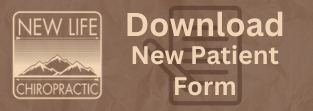The term “subluxation” might sound complex, but for many, it’s the hidden cause behind their daily discomfort. A spinal subluxation occurs when vertebrae in your spine lose their proper position or motion, potentially affecting your overall well-being in surprising ways.
While some subluxations are obvious, others can be subtle, quietly impacting your health without obvious signs. So, let’s explore the key indicators that might suggest you’re dealing with a spinal subluxation.
1. Recurring Headaches That Won’t Quit
Those persistent headaches might be more than just stress or dehydration. When your upper cervical spine experiences subluxation, it can create tension in the surrounding muscles and nerves, leading to frequent headaches. These headaches also often come with neck stiffness and might worsen with certain head positions or movements.
2. Unexplained Balance and Coordination Issues
Spinal subluxations can interfere with your body’s proprioception—your awareness of where your body is in space. You might notice subtle changes in your balance or find yourself feeling less coordinated than usual. Even simple tasks like walking in a straight line or standing on one foot might become surprisingly challenging.
3. Limited Range of Motion in Your Spine
When a vertebra isn’t moving properly, it affects your entire spinal segment’s mobility. You might notice difficulty turning your head fully in one direction, decreased ability to bend or twist, or a sensation of stiffness that doesn’t go away with stretching. This limitation often develops gradually, making it easy to adapt to until it significantly impacts your daily activities.
4. Uneven Muscle Tension or Spasms
Subluxations create compensatory patterns in your body. You might notice that muscles on one side feel consistently tighter than the other or experience random muscle spasms near your spine. These muscle imbalances can appear anywhere along your back and might even extend into your shoulders or hips.
5. Numbness or Tingling in Your Extremities
When spinal subluxations pressure nerve roots, they can cause sensations of numbness, tingling, or “pins and needles” in your arms, hands, legs, or feet. These sensations might come and go, or they might affect only specific fingers or toes. Even mild nerve interference can create these unusual sensations, often serving as an early warning sign of subluxation.
6. Changes in Your Posture or Body Alignment
Look in the mirror—do your shoulders appear level? Is one hip higher than the other? Spinal subluxations can create visible changes in your posture and alignment. You might notice one shoulder blade protruding more than the other, or friends and family might comment that you’re “leaning” to one side when you think you’re standing straight.
Don’t wait until these signs become severe to seek help. Early detection and correction of spinal subluxations can prevent them from developing into more serious problems. With your Montrose chiropractor by your side, you can prevent subluxations before they become bigger problems, as well as tackle any problems arising from current ones. Book your appointment with the New Life Chiropractic team today.




